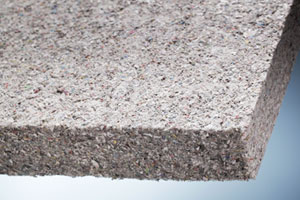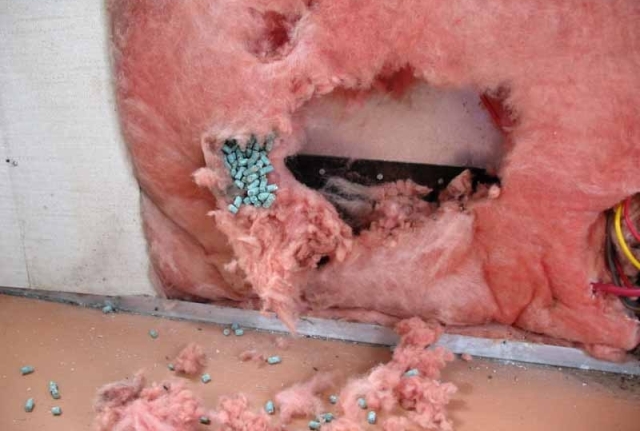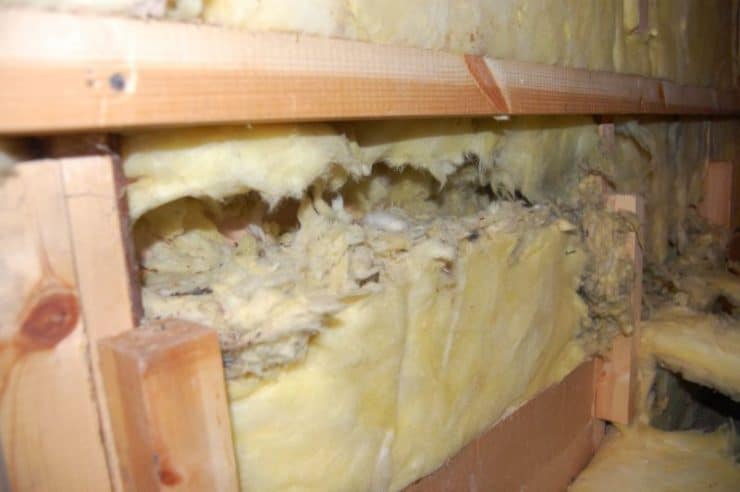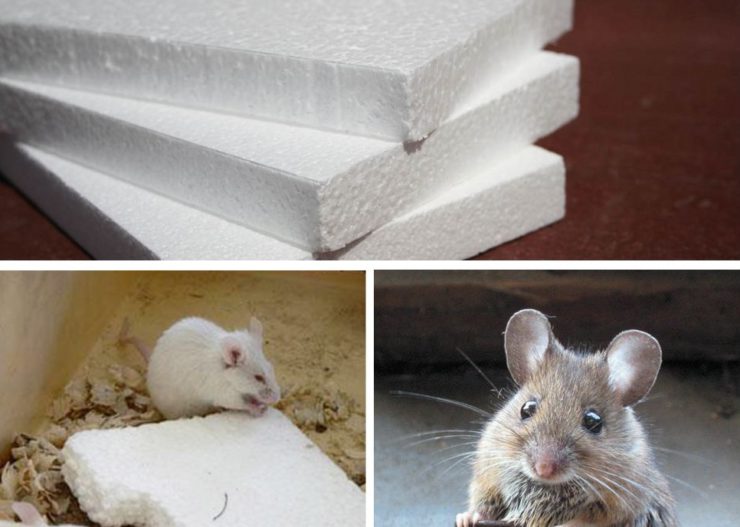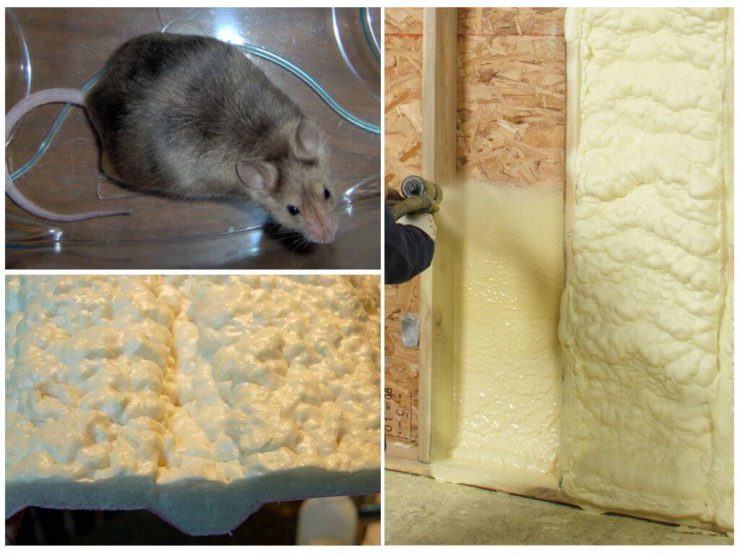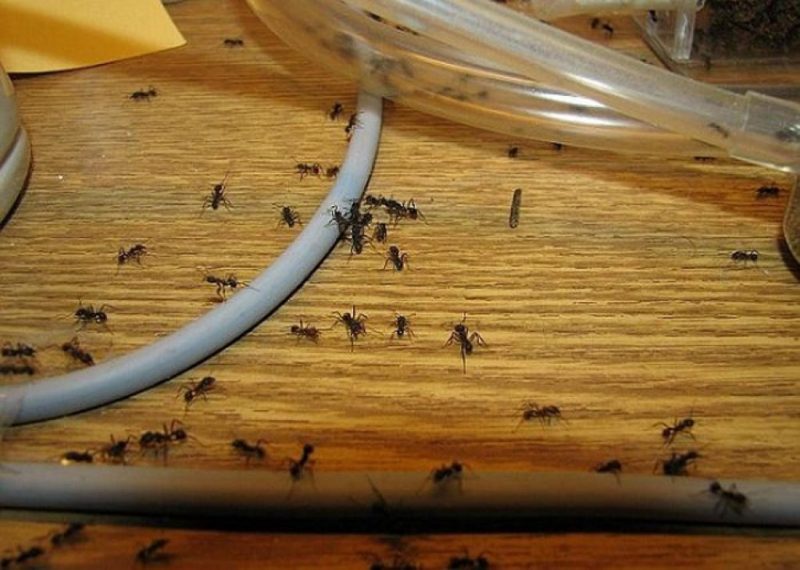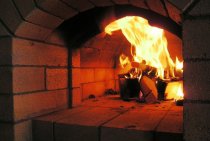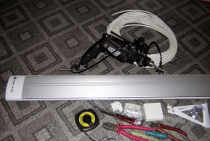What is the attraction
According to many experiments and the experience of numerous inhabitants who use soft material for construction needs, which are all types of mineral wool, the toothy guard is not particularly frightened. Even the notorious glass wool - a rather prickly and skin-irritating substance - is not an obstacle for eared ears. Moreover, in all these heaters, the burrows feel comfortable, they make moves with pleasure and equip cozy and warm nests inside.
In addition, rodents, although not quite intellectually developed creatures, are well aware that soft cotton wool is the best place to organize your own house, because it:
- does not rot
- does not spoil
- has good ventilation properties,
- It's always warm and dry there
- and the structure of the fibers perfectly holds its shape.
By the way, there is an opinion that no matter what the soft insulation is, in terms of its constituent ingredients, purely hypothetically mice can live in it!
Therefore, when erecting a structure, they think in advance about carefully sealing cracks and technological holes so that rodents do not have the opportunity to climb inside and make a warm nest for themselves.
It is worth noting that the official manufacturers of mineral wool, for example, Techno, Parok, Izover and some others, do not indicate its resistance to rodents in the descriptions of the characteristics of the material. At the same time, Rockwool claims the opposite and confidently reports that mice are not interested in their product. Although, most likely, the developer is cunning, as there are many reports of home repairmen that refute this fact.
In connection with the foregoing, we can conclude that mice do not just wind up in mineral wool, but also feel at ease there.
How to protect the insulation
In order not to have to think about how to get rid of mice in the insulation and spend money on new material, you should take care of the safety of your home even during construction.
The following points should be followed, and rodents will not be able to spoil the insulation or enter the housing:
- To insulate the floor covering, use loose material.
- Minimize the number of seams during wall insulation.
- Use roofing material for roof insulation.
- Finish the facade of the building with a durable cladding.
- Make a strip foundation.
It is necessary to take care of the type of insulation even before the start of construction, because not all materials can be used when the building has already been put into operation.
If organic insulation is used in the house, then it should be rolled into concrete or overlaid with a fine mesh. In this case, rodents will not be able to arrange a mouse hole in it.
Sometimes mice still annoy the owners, despite all the work done. Then you have to deal with pests in the available ways: turn on the ultrasonic repeller, arrange mousetraps, lay out poisonous baits. You can have a cat in your house. Its smell will scare away rodents from human possessions.
Builders or consultants from a hardware store will help you choose the appropriate type of insulation. You can also order the right material online. It will be delivered wherever you are - in Moscow, St. Petersburg or a small town.
Study
The answer to the question about heat insulators that repel rodents is impossible without market research. In total, there are two types of heat insulators on it - organic and artificial.
Organic insulators are made from recycled or natural materials. They contain a minimum of chemical additives - only substances that resist ignition. The main examples are ecowool, reeds, straw, etc.
There are many more inorganic or artificial heat insulators.And if natural ones are produced, as a rule, in bulk or slabs, then this category of formats has more: slab mineral or basalt wool and loose perlite. You can stop your choice on solid aerated concrete. Next, we will talk about indicators of reliability in relation to rodents.
Anthill device
The anthill looks like an ordinary mountain of branches, blades of grass, pieces of earth, but in fact it is a subtly and well-thought-out dwelling, inside of which everything is much more interesting than outside.
The ant house has the shape of a cone for a reason, thanks to it the rain rolls down the blades of grass and needles almost without getting inside. The anthill rises above the level of the grass, so that the sun's rays penetrate inside, with which the ants warm up, and also warm their larvae and pupae. And the deeper layers of the anthill is a refuge for insects on cold days. Thanks to a cunning project, ants spend summer in a summer cone, and winter in earthen passages.
Parts of an ant dwelling
Looking at the picture, you can see the various parts of the anthill, the following describes what each of them serves for:
- The top cover, consisting of needles, blades of grass and twigs, protects the ant house from the weather.
- A chamber heated by the sun's rays - here the ants warm themselves and their offspring.
- One of the many entrances, guarded by soldiers, in addition to being a door, also serves as a channel for ventilation.
- Warehouse for garbage and dead ants.
- A wintering chamber where ants sleepily wait out the cold.
- Storage room for grains.
- The queen's chamber, where the queen lives and lays her eggs, which is cared for by worker ants.
- Chamber for eggs and larvae.
- Aphid chamber.
- Pantry for caterpillars and other "meat" prey.
Instead of a conclusion
Solid insulation may protect the house from the penetration of rodents, but they cope much worse with the preservation of heat than mineral wool.
Therefore, you should not choose building materials for their resistance to rodents, but it is better to arrange a reliable barrier to mouse-like offspring at the construction stage.
For this use:
- a fine-mesh metal mesh, while the diameter of the hole should be less than 1 cm. It is laid on the subfloor, the basement is wrapped around it, and all the corners of the future house are upholstered; to protect the foundation, the grid is dug to a depth of at least 80 cm.
- expanded clay laid on the subfloor with a layer of at least 30 cm will become a good obstacle to the path of pests from the side of the floor; expanded clay protection can be strengthened with particle boards impregnated with boric acid and treated with synthetic wax;
- from folk remedies, the addition of lime, ash, pine branches, burdock seeds or black root to the heater is considered effective.
If the mice, despite all the tricks, nevertheless made their way into the house and pester with their presence, they are fought with in all possible ways: laying out poison, installing mousetraps, ultrasonic repellers, a cat and everything that people's ingenuity came up with.
What kind of ants can be found in residential buildings
On the territory of Russia, there are two types of domestic ants:
- pharaoh or red - these insects are very small; their body length is only 2 mm. They are not adapted to living in the wild in a temperate climate, and therefore, if the opportunity arises, they try to settle in a human dwelling;
-
ant-thieves - they, unlike the previous species, may well live outdoors, and hunger can make them come to your house. They come in small groups and most often appear at dachas; You can meet them on the ground floor or in the basement.
In multi-storey buildings, they almost never rise above the second floor - the female finds a secluded place in the room and establishes a nest there, from which subsequently working individuals run out into the apartment from time to time.
Representatives of both species have a yellow sometimes orange body color and are the most frequent guests of residential apartments. If you live in a private house, you can also meet black ants.But they are not domestic, but enter the house only in search of food and, as a rule, leave after a while. Unlike domestic ants, black ants do not build nests in a human dwelling, but only “walk” through all rooms in search of a source of saturation.
In old wooden houses located in the forest belt, you can sometimes find red ants. They are also not domestic and parasitize only at the junctions of logs. In addition, their appearance is isolated cases.
The ability of various types of thermal insulation to resist ants
In North America and Europe, various ant species are a concern for individual homeowners as pests that cause great economic damage. This problem is relevant for residents of certain regions of Russia and the countries of the central part of Central Asia.
For example, carpenter ants have strong jaws and build nests in partially destroyed tree trunks or stumps, as well as in growing trees and in heavily dried wood. In conditions when ants make their way into constructed buildings, the need to build nests leads to confrontation between ants and humans. In the presence of ants in houses, people experience discomfort, in addition, ants can destroy load-bearing wooden structures from the inside or reduce the thickness of the heat-insulating layer.
Therefore, studies were conducted at the Norwegian Institute of Public Health on the ability of various types of thermal insulation to resist the effects of ants.
In three experiments conducted by Norwegian scientists, a total of 2,250 carpenter ants and 120 larvae were used. The experiments compared materials such as:
- expanded polystyrene (EPS);
- extruded polystyrene foam (XPS);
- foam glass FOAMGLAS.
During the experiment, the following were determined:
- the time from the settlement of ants in containers with isolation samples to the start of destructive activity;
- the degree of destruction of samples of heat-insulating materials 5 days after the start of the activity of ants;
- the influence of the temperature of samples of heat-insulating materials on the activity of ants.
According to the results of the experiments, it was found that expanded polystyrene (EPS) and extruded polystyrene foam (XPS) are not able to resist the penetration of ants. It turned out that in the above heat-insulating materials, ants are able to dig passages and corridors, as well as arrange full-fledged nests. During the experiment, it was possible to establish that the ants caused more damage to slightly heated samples of EPS and XPS.
Unlike EPS and XPS, the FOAMGLAS foam glass specimens were able to withstand ants and did not experience any damage, regardless of their own temperature.
| Corridor system dug into Styrofoam by carpenter ants | Visualization of destruction of samples of thermal insulation EPS, FOAMGLAS and XPS |
| You can read more about the report on the results of the experiments of Norwegian scientists here... |
What rodents don't like
But really, what kind of insulation do not gnaw mice?
In the first place, perhaps, you can put expanded clay - clay processed in a special way, formed into granules of different sizes. Rodents do not favor it as a place for home improvement, especially if a fine fraction is used. The fact is that moving along a shaky surface, mice fall into it, besides, a long stay in dusty expanded clay clogs the airways of animals and they have nothing to breathe.
In second place is foam glass - it is made by steaming and foaming glass. When solidified, such material becomes too hard and does not lend itself to mouse teeth.
Foam concrete is another material that is an excellent barrier to the gray army of rodents. A solid mixture of sand, cement, water and a foaming agent has a rigid and porous structure in which it is problematic for mice to gnaw through passages.
What heaters are not a barrier for mice and rats
We got acquainted with sustainable materials, but what kind of insulation in the house is better not to use? There are many of them, mice feel very comfortable in them. Rodents easily gnaw holes and equip nests, although they rarely eat insulation. The most unfortunate material for warming a house is foam. Thorough treatment of the insulation with boric acid or copper sulphate will help against pests.
Varieties of mineral wool: glass, stone (basalt)
Mineral wool has high thermal insulation properties; it is obtained by processing slag and some rocks with additional impurities. One of the varieties of mineral wool is glass wool, which was widely used as a heater in the Soviet era. It is elastic, durable, breathable, resistant to frost, fireproof. Fungus and mold will never appear in it, but mice start up often. Rodents do not eat glass wool, because it is very prickly, but they easily make long passages in it and build nests.
Today, glass wool has been replaced by a more durable and safer basalt (stone) wool. It is made from the remains of rocks by rapid melting. The soft fibrous structure, thermal conductivity and environmental friendliness make it a favorite habitat for rodents. They settle inside the material, which leads to a decrease in the quality of the thermal insulation of the house. No mineral wool is suitable for warming residential premises.
Styrofoam and expanded polystyrene
Styrofoam attracts rodents with its texture and smell, in a short time they are able to turn up to 80% of the insulation into dust. Mice not only settle in it, but also store food inside, which makes a person’s stay in the room unbearable. Styrofoam is very easy to install and is inexpensive, but it must be properly prepared before use. Foam boards can be covered with a fine-mesh metal mesh, but this is too expensive. Experienced builders are advised to douse them with a liquid concrete solution that prevents the appearance of rodents.
Instead of foam, you can use expanded polystyrene, which is more resistant to mouse teeth. It is made from the same raw materials as polystyrene, but using more modern technologies. Special flame retardants are added to it at high temperature, enriched with carbon dioxide and extruded. The resulting mass hardens and is cut into plates of the required size. Expanded polystyrene is characterized by a higher density, lightness and ease of installation. It has excellent thermal insulation, resistance to moisture and frost, but the thicker the plate, the more likely rodents breed in it.
Mounting foam
Unfortunately, the question of whether mice gnaw polyurethane foam can be answered in the affirmative. They not only grind their growing teeth on it, but also grind the foam into fine dust, which they use to build nests. Inexperienced owners of private houses are trying to seal holes made by mice and rats with mounting foam. This empty occupation will lead to nothing, because it will not be an obstacle for rodents.
Foam rubber, roofing material and other materials
Unlike foam rubber and polyurethane foam, mice are not able to gnaw through roofing material and slate, because they are dense and hard. The only disadvantage of using roofing material is the ability to absorb odors. You can eliminate the disadvantage with the help of a film stretched over a roofing sheet. Instead, roofing is often used, the smell of which is unpleasant for rodents. It is better not to use foam rubber as insulation at all, as well as chipboard, because these materials are defenseless against the teeth of rats and mice.
The choice of insulation material begins at the stage of laying the foundation
First of all, pay attention to its heat-conducting properties, durability, noise protection. Environmental friendliness, fire safety and breathability are considered an important point.
From this point of view, expanded clay is an ideal insulation. There are cases when rats damaged aluminum and lead pipes, and it will not be difficult for them to gnaw through most popular heaters.
How and what kind of ants penetrate the dwelling
First, let's find out who we're dealing with.In a good half of the cases, our houses are visited by pharaoh ants, less often red ones. The former are distinguished by small dimensions (worker body length up to 2 mm) and a large number of individuals. Red ants are noticeably larger (up to 14 mm), but they have much fewer "apartment" foragers. But both of them cause a lot of trouble.
In search of food, they can travel long distances. On average, the length of one path along which workers walk fluctuates around 100 meters, and their total length can reach almost a kilometer.
Pests enter homes through cracks, windows, doors and technical openings. If you close one crack, they will easily make a new road through another. Sometimes ants get into the apartment with clothes or with items for a picnic and country rest.
As such, they do not pose a threat of resettlement in the house. As a rule, the anthill is within the above 100 meters. In some cases, insects can create small buffer nests - a kind of distribution center, from where food is delivered to the main dwelling.
Reasons for the appearance
So, we have decided on the types of domestic ants, now let's find out the reasons for their appearance.
Immediately it should be said about the ants-thieves. These insects penetrate into human dwellings for one simple reason - the absence of nearby anthills of other species, where they usually get their food in the wild.
As for the pharaohs, there will be several reasons:
- the anthill is located in the next room;
- you rarely do general cleaning in your apartment;
- the owners themselves brought pests into their home;
- ants are fleeing and looking for shelter in your apartment.
Infection in the adjacent room
If your neighbors have a nest of ants, then expect them to come to you soon. With an increase in the population, insects will begin to look for a place to create child anthills, and if your apartment is in close proximity to the original source, then it risks getting into the first rows of the list of arranging a new home.
In addition, the neighboring apartment will not necessarily be an ant breeding ground. These insects are very fond of damp places and can come from a damp basement, of course, if your home has one. The presence of a garbage chute can also cause ants to appear in your apartment.
And, it is possible that on the ground floor of your house there is a restaurant, cafe or other catering establishment. After all, ants, like cockroaches, are located where not only a source of water is located, but also an abundance of food.
Poor sanitation
Often ants come to those houses where there is a constant and inexhaustible source of food. And if you rarely do general cleaning, and also never disinfected places where food waste usually accumulates, then your apartment is an ant's paradise.
First, a scout will come to visit you, who will definitely see that you have something to profit from and be sure - after a while he will return more than one. And after a week or two, a nest will be organized.
But to prevent such a development of events is quite simple:
- regularly clean where the garbage cans are;
- check the health of the plumbing and always close the taps tightly at night, while it is advisable to wipe the sink dry;
- if there is a suspicion that ants have chosen your apartment, look for their nest near sinks, leaking pipes, under baseboards, in cracks in kitchen walls;
- do not leave open food on the table;
- if you managed to trace which “paths” the scout ants move along, then these paths must be treated with a special insecticide or a reliable folk remedy, in other words, you should erase the trail that helps parasites find their way to food.
You yourself brought the ants
This situation happens quite often, but not always this oversight on your part is capable of bringing unpleasant consequences. The fact is that ants are very organized and are always attached to their nest. Even if one of them ends up on your clothes, and then in your house, it will immediately look for the way “home”, since ants are pests that purposefully look for new nesting places and they don’t need help with this.
And it’s a completely different matter if you are “lucky enough” to bring an ant queen into your house. She will certainly organize a new nest and, as a result, the ant population will soon become quite numerous: some individuals will come after the queen, the rest will hatch from the eggs.
Sometimes, the owners of cozy apartments manage to bring a whole nest. This happens when moving, when the anthill “moves” to a new place of residence along with furniture, food and household appliances.
Ants are looking for shelter
And the last reason is the persecution of insects in neighboring rooms. In this case, the parasites simply work out the instinct of self-preservation, and they try to escape from danger as soon as possible.
In this case, it can be advised to pay attention to preventive measures that will not allow the ants to organize a nest:
- seal the joints of pipes and those places where they enter the wall;
- regularly carry out wet cleaning in all rooms without exception;
- it is advisable to decompose repellent plants or use other deterrents;
- always remove leftover food from the table;
- wash dishes immediately after eating;
- take out the trash every day, especially if there is food waste in the bucket.
And it will be useful to periodically communicate with neighbors. In case of complaints on their part about the occurrence of ants, you can be "fully armed" when the insects come to equip their nest with you.
